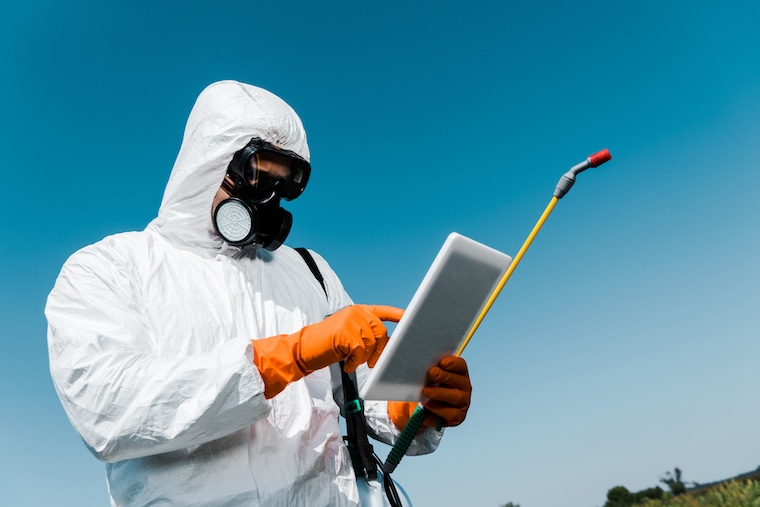How to make a website for pest control?
Creating a website for your pest control business is crucial in today’s digital age. It not only helps you establish an online presence but also helps you reach out to a wider audience. In this article, we will guide you on how to make a website for pest control that stands out from the competition.

Define Your Target Audience
Before starting to create your website, it’s important to define your target audience. This will help you create a website that caters to the needs of your potential customers. For instance, if your target audience is homeowners, your website should provide information about how your pest control services can help them get rid of pests from their homes.
Choose a Domain Name
Your domain name is the address of your website on the internet. It’s important to choose a domain name that reflects your brand and is easy to remember. Try to keep it short, simple, and relevant to your pest control business. For example, if your business name is “ABC Pest Control,” your domain name could be “abcpestcontrol.com.”
Select a Web Hosting Provider
Web hosting is the service that allows your website to be accessible on the internet. It’s important to choose a web hosting provider that offers reliable and secure hosting services. Look for a provider that offers 24/7 technical support and a high uptime guarantee. You can find a provider that suits your needs among the recommended ones listed in the article “Best way to start and get into pest control.”
Choose a Website Platform
There are many website platforms available, such as WordPress, Wix, and Squarespace. Choose a platform that suits your business needs and provides the functionality required for your website. WordPress is a popular platform among businesses due to its flexibility and scalability. You can find a step-by-step guide on how to set up and register a pest control on this page: “How do i set up and register a pest control?“
Design Your Website
Your website design plays a crucial role in creating a positive user experience for your visitors. Your website should be easy to navigate, visually appealing, and mobile-friendly. Use a color scheme that reflects your brand and keep the design clean and simple. You can get more ideas on how to design your website by checking out the article “How to make a logo for your pest control?“
Create Content
Your website content should provide information about your pest control services and how they can benefit your potential customers. Use high-quality images and videos to showcase your services and create engaging content that encourages visitors to take action.
Optimize Your Website for Search Engines
Search engine optimization (SEO) is the process of optimizing your website to rank higher on search engine results pages (SERPs). This helps you reach out to a wider audience and increase your website traffic. Use keywords that are relevant to your pest control business and optimize your website’s meta tags, headings, and content.
Promote Your Website
Promoting your website is important to reach out to your target audience and drive traffic to your website. Use social media platforms like Facebook and Twitter to promote your website and engage with your audience. You can also run paid advertising campaigns on Google Ads to increase your website visibility.
Conclusion
Creating a website for your pest control business can be a daunting task, but by following the above steps, you can create a website that stands out from the competition and reaches out to your potential customers. Remember to define your target audience, choose a domain name, select a web hosting provider, choose a website platform, design your website, create engaging content, optimize your website for search engines, and promote your website to drive traffic and increase conversions.
FAQ
Choosing the right domain name is crucial for your website’s success. Your domain name should be easy to remember, relevant to your business, and ideally include a keyword related to pest control. For example, “ABCpestcontrol.com” or “PestControlPro.net.” Avoid using hyphens or numbers in your domain name, as it can make it difficult for users to remember.
While hiring a professional web developer can be beneficial, it’s not always necessary. There are many website builders, such as Wix or Squarespace, that make it easy for beginners to create a website without any coding knowledge. However, if you have a larger budget and specific website requirements, hiring a professional may be the best option.
Your website content should provide information about your pest control services, how they benefit your customers, and your service areas. Include high-quality images and videos to showcase your services and create engaging content that encourages visitors to take action. Additionally, you may want to include testimonials from satisfied customers, FAQs, and a blog section to provide helpful information related to pest control.
Search engine optimization (SEO) is an important part of creating a successful website. To optimize your website for search engines, use relevant keywords throughout your website’s content, meta tags, and headings. Additionally, make sure your website is mobile-friendly, has a fast loading time, and includes high-quality content that provides value to your visitors.
Promoting your website is important to reach out to your target audience and drive traffic to your website. Use social media platforms like Facebook and Twitter to promote your website and engage with your audience. You can also run paid advertising campaigns on Google Ads to increase your website visibility. Additionally, consider partnering with local businesses or organizations to reach a wider audience.

